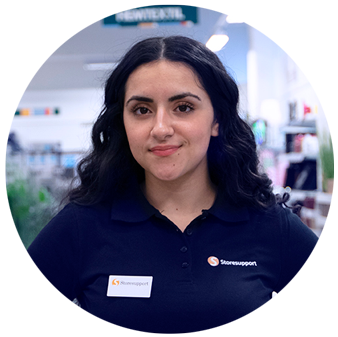Behöver du hjälp?
Vi vill gärna hjälpa dig!
Välj nedan vilket kontaktsätt som passar dig bäst.

Vi vill gärna hjälpa dig!
Välj nedan vilket kontaktsätt som passar dig bäst.

The digital grocery trade, with algorithms and voice assistants at the forefront, is in the process of fundamentally reshaping the battle for market share being waged by the FMCG chains’ own brand products and ‘regular’ brands. Simply put: most visible = most sales.

In cases where basically identical products are available, for example, pasta or crushed tomatoes, the growing online FMCG trade gives retailers ample opportunities to impact which products end up in the customer’s grocery cart. For example, algorithms can put together smart shopping lists or produce personal campaign offers based on previous purchases. It is also possible to adjust the algorithm so that the FMCG retailer’s own brand products or the customer’s most popular selections, which tend to be from the largest and most well-known brands, end up at the top of the list in searches. The higher up in the search results, the greater the chance the product will be selected.
The battle of the brands in the digital grocery trade will also become increasingly complex in a future with voice assistants. The day will come when the consumer can ask the voice assistant to send an order for the ingredients needed to prepare ‘pasta and meat sauce’. The question is which pasta will end up in the grocery bag delivered to the consumer’s home — Barilla or the retailer’s own brand? The power over this decision lies with whoever is in charge of the algorithm. One of the largest Swedish FMCG players has already started using a digital voice assistant that can share inspiration for recipes and send grocery lists to mobile phones.
The growing digital trade will in all likelihood also lead to a higher percentage of physical convenience stores for complementary top-up shopping. The stores have a limited amount of space, and retailers offer the most popular goods for sale — which will probably also translate into own brand products and the most popular brands since consumers mimic their own online behaviour. Furthermore, an uncertain future economy will benefit own brand products since consumers will likely be interested in more low price options.
Last year, own brand products represented just under one-fourth, 24.2 per cent, of Swedish FMCG sales, and there is every reason to believe the percentage will continue to increase. At the same time, popular and consequently strong brands will strengthen their position to the detriment of weaker brands.
With that being said, however, there is still a great deal of room for smaller brands to stake a claim since consumers are becoming increasingly disloyal to specific brands. Variation will always be needed, especially at physical stores since consumers will not accept a range that is overly narrow. They will continue to demand locally produced items or unique products that entice their taste buds, promote social status or reinforce their own identity. The key for small suppliers is to be unique in terms of origin, quality, packaging, strong storytelling or low price.
Download the PDF here.